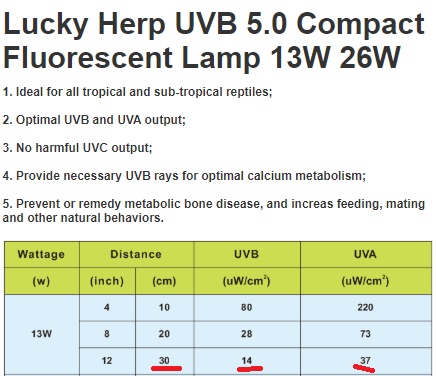VadimLediaev
New Member
Hello, I am currently building a digital UVB/UVA meter capable to do a precise, separate A and B and UVIndex measurement, which will be used to measure parameters of artifical light in vivariums. I want to incorporate an optimal UV values into the device code so it will tell the user weither the light is optimal, or too low, or harmful to the particular species. The sensor returns values in uW/cm2. As I said, it has a separate channels for A and B which makes it unique because it is pretty hard to find such a uvb meter on the market (for suitable price).
So, my question is, can anybody tell me what are the optimal values of UVB and (less important) UVA light for most popular species?
I believe the device is going to be much more user-friendly if it has a readable format of the output among with numbers.
Currently I only have the values for Fur.pardalis (10-50uW/cm2 of UVB) from this article: http://www.chameleonnews.com/10JulWeldon.html
Thanks!

So, my question is, can anybody tell me what are the optimal values of UVB and (less important) UVA light for most popular species?
I believe the device is going to be much more user-friendly if it has a readable format of the output among with numbers.
Currently I only have the values for Fur.pardalis (10-50uW/cm2 of UVB) from this article: http://www.chameleonnews.com/10JulWeldon.html
Thanks!

